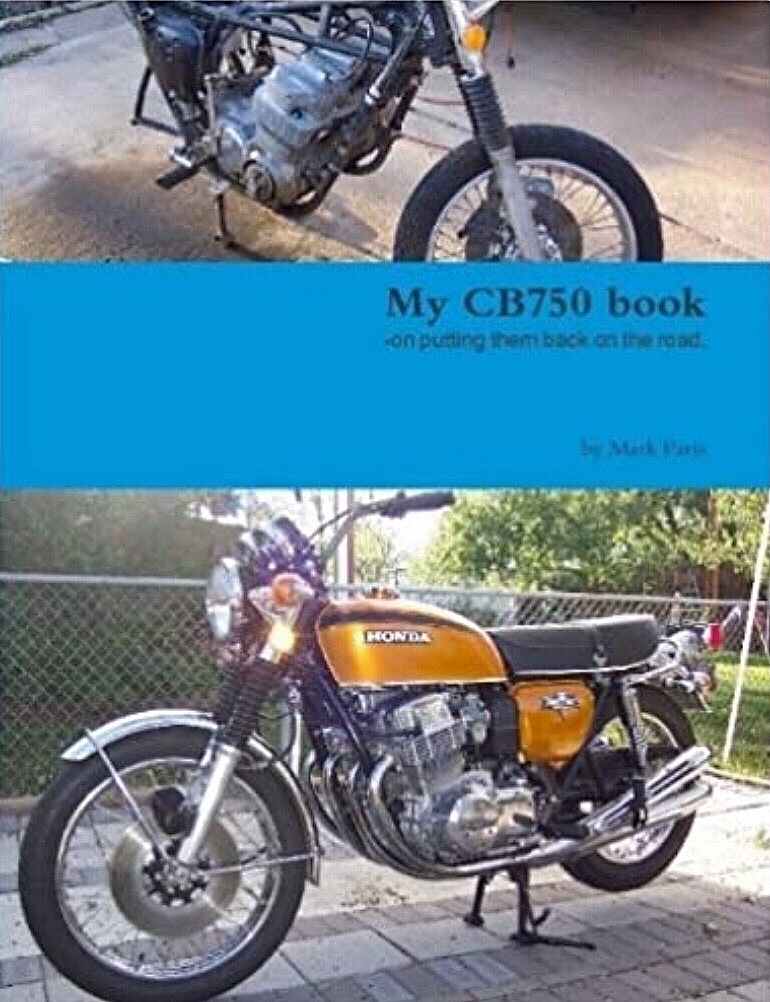  ® ®
|
Mark Paris book errors Book edition December 2010 This document December 2020 |

|
|
pg II-4 |
No recommendation for removing stuck oil jets. | It is critical to get those jets out while working on the cylinder head, even in the case of the early pressed-in ones. |
|
pg II-15 |
Use of calipers to measure a piston. | Nope. Absolutely not. Astonishing. |
|
pg II-17 |
Use of brake cylinder hone in a cylinder. | A brake cylinder hone is never used in an engine cylinder. Nor is it ever used on a Honda brake cylinder, |
|
pg II-17 |
Honing an in-service cylinder. | Never. Knowing the clearances these engines are assembled to, you would not want to do this. |
|
pg II-17 |
Use of a feeler gauge to measure piston-to-cylinder clearance. | This is so bad I don't even know what to say. To begin with, have you ever seen a 0.0007" feeler gauge? |
|
pg II-25 |
Testing stator with an Ohmmeter. | Controversial, I'll admit. But not among pros. I stand by best practice, and this isn't best practice. |
|
pg II-31 |
Barnett spoken of in neutral terms. | Wow. Incomprehensible. |
|
pg II-50 |
Vesrah spoken of positively. | No. Uh uh. There is nothing good about Vesrah gaskets. |
|
pg IIIb-11 |
Honing a brake master cylinder. | This is not something you ever want to do to an aluminum master cylinder. |
|
pg IIIc-6, Appendix b-3 |
Drive chains last only 2,000 miles; no instruction on lubing. | Incredibly wrong. A properly maintained non-o-ring chain can go at least three to four times that long. and o-ring types potentially longer. |
|
pg IV-9 |
Detonation and preignition confused. | They are very different things. |
|
pg IV-9 |
"Don't use gas preserver...it will cause all sorts of problems." | Really? This is completely out of touch with reality. Using Sta-Bil is the single most advantageous thing you can do to maintain your bike. |
|
pg IV-12 |
Using drill bit to clean jets. | Not at all good practice. There is even a Honda bulletin against this. |
|
pg IV-12 |
Spraying around manifolds method of vacuum leak detection. | No professional finds vacuum leaks this way. |
|
pg V-2 |
"Honda does not sell bullet connectors." | Wrong. Honda has sold the male and female bullet connectors from the very beginning and still does. |
|
pg V-26 |
Handlebar switch overly stressed by H4 headlight. | No. The only way this could be even close to being true is with Chinese switch assemblies. It certainly isn't with OEM parts. |
|
pg V-27 |
Endorses crimp connectors. | Crimping without soldering is never a good thing. |
|
pg V-28 |
Endorses Chinese keyswitches. | No way. |
|
Appendix d-2 |
Promotes interference valve angle. | Never a good practice, this has been invalidated since the 1960s. |
|
Appendix d-3 |
Promotes lapping valves. | Just as with interference valve angles, there is no good reason to do this and plenty of reasons not to. |
|
Appendix d-3 |
Checking valve seal the liquid method. | Professional mechanics know this has little value. |
|
Appendix d-5 |
Using the Sioux valve seat tool. | This is almost the worst possible choice. See my article on valve seat tools. |
|
Appendix e-4 |
"Honda points are not durable." | This is simply not true, not in the slightest. Factory Honda SOHC four points last up to 20,000 miles when properly maintained. |
|
For more powersports maintenace fallacies, see this article.
More book critiques: Julian Ryder, Sean MacGregor, Randakk
|
© 1996-2024 Mike Nixon